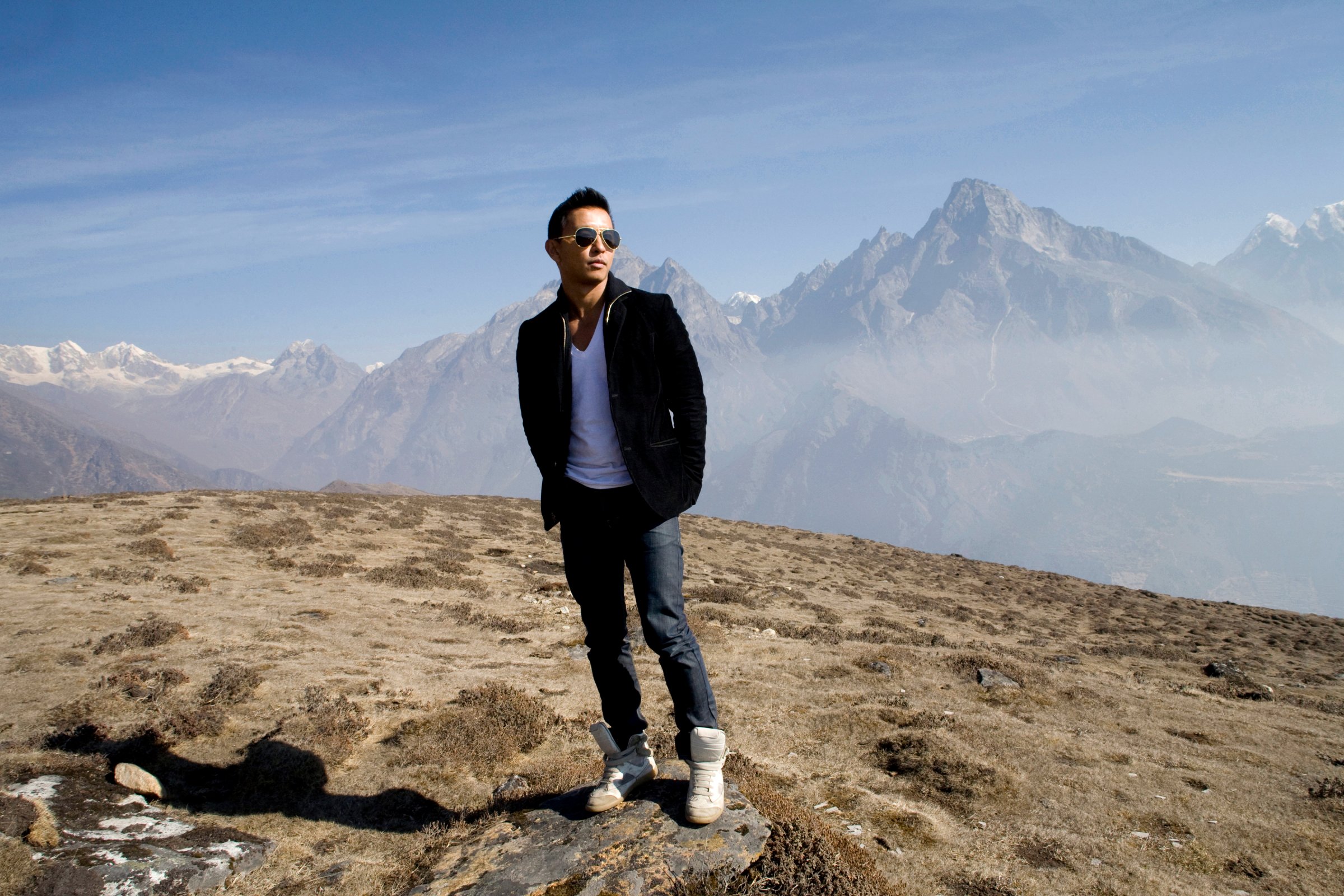
It is hard to believe it has been a year since the Gorkha earthquake struck Nepal, killing more than 8,000 people and injuring an additional 21,000. I remember the moment I first heard it had hit.
The night before, I was at the Whitney Museum art party in New York City. I returned home late that night to go to bed, and when I awoke, I received a text from a friend, letting me know that an earthquake had struck Nepal. I immediately tried to get in touch with my family. I tried to stay calm and not let my fears cripple me, however it took a while to get a hold of them, and I recall my sense of anxiety and worry heightening with every passing minute, not only for my family but for all affected. It is quite overwhelming, terrifying and baffling to realize how quickly things can change without the slightest of warnings.
Nepal has always been close to my heart—a part of who I am, as both a designer and as a person. For me, Nepal is a beautiful, vibrant and resilient country full of family, tradition, ritual and inspiration. While I do value these positive attributes of the country and consider it home, I know it is not without its imperfections. Like every country, it has flaws that it must overcome politically, economically and environmentally. The earthquake rattled Nepal to its core and has impacted the country’s future in many ways. My hope is that we can build up from the devastation to make an even stronger Nepal.
The seismic shift brought a new layer of problems, and with that, attention, awareness and advocacy to Nepal. The earthquake caused homes, schools, heritage sites and infrastructure to crumble. The only blessing is that it occurred on a Saturday—I shudder at the thought of what would have been if it had struck during the week, when children were at school and separated from their families. Food immediately became sparse, and the water supply was destroyed, leaving more than 5 million people without access to clean water and more than 16 million lacking access to clean sanitation facilities.
In Kathmandu, the capital, many families, including my own, took refuge in the temporary shelters. Even if their homes weren’t damaged, people were too scared to risk going back inside. There was no right answer on where to begin on the relief front, but seeing the haunting images that felt so close and far at the same time, assured me that doing nothing was inconceivably and undoubtedly not the answer.
My siblings and I had started a foundation, Shikshya Foundation Nepal, in 2011—four years before the earthquake. “Shikshya” means a lesson or learning, and our focus and goal has been to bring education to underprivileged children. Immediately after the earthquake, we shifted gears to support medical aid and to provide food, water and temporary housing to Nepalese communities in need. We were fortunate enough to receive immense support from the fashion industry, and to date, have raised more than $1 million dollars for earthquake relief efforts, which enabled us to provide 1,930 temporary shelters and help more than 15,000 families. With this incredible amount of donations also came great responsibility about how to best continue the rebuild and relief efforts.
We spoke to many in the affected areas, and they strongly believed that they’d find a way to rebuild their houses, but their primary concern was education for their children. They truly felt that education could not wait, as it is the best means to financial, social and emotional empowerment. Therefore, we decided to redirect our efforts toward education and equal opportunity for our next generation.
Since the earthquake, 145 children have received scholarships through our partner organizations and our foundation’s scholarship programs. With respect to the Prabal Gurung brand, I have moved our knitwear production to Nepal. We work with a factory where more than 50% of the employees are women and ensure they are paid a fair and equal wage. It is important to me to create employment opportunities for women so they, too, can be financially and socially empowered.
So much has been done to help Nepal stand on its own again, and I am so grateful to all of the support we’ve received. Perhaps the most inspiring was to witness the youth of Nepal come together to aid with the relief work, taking initiative without waiting for government or agency support. Their strength kept our country bound together, and we have a sense of pride and dignity in our empowered youths, as they are our future.
There is an absolute sense of hope, yet the relief and rebuilding efforts are far from complete. The bureaucracy in the Nepal Reconstruction Authority is slow to provoke change, and the border blockade in the southern parts of the country, which has since ended, also slowed rehabilitation efforts. Tremors from the recent earthquake in Myanmar reminded the Nepalese people of that devastating day, April 25, and the following quake on May 12, leaving them fearful for their own fates and futures.
We are not alone—in recent weeks, a shaky future has been cast as earthquakes struck Ecuador and Japan. With a rapidly changing news cycle and constant stories of terror throughout the world, we are quick to move from one crisis to the next. Yet Nepal cannot be cast in the shadows as we still have many, many miles to go.
More Must-Reads from TIME
- How Donald Trump Won
- The Best Inventions of 2024
- Why Sleep Is the Key to Living Longer
- Robert Zemeckis Just Wants to Move You
- How to Break 8 Toxic Communication Habits
- Nicola Coughlan Bet on Herself—And Won
- Why Vinegar Is So Good for You
- Meet TIME's Newest Class of Next Generation Leaders
Contact us at letters@time.com